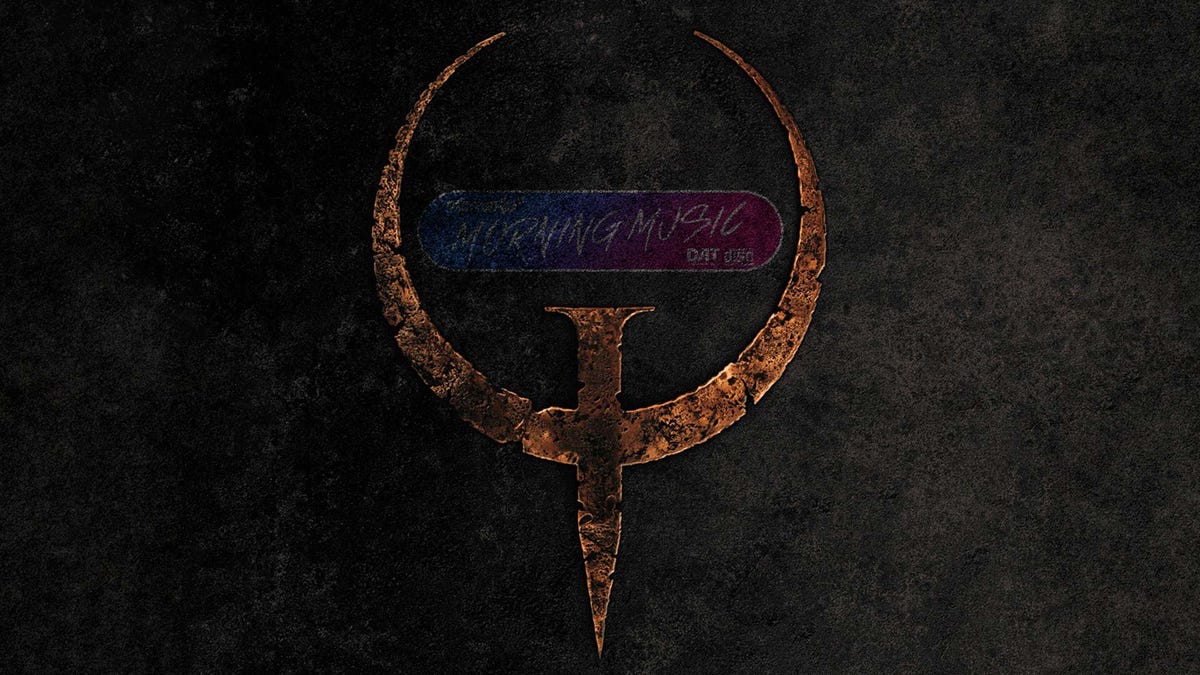Nine Inch Nails’ Ambient, Droning Quake Soundtrack Massages My Brain - 4 minutes read

Welcome to Morning Music, Kotaku’s ongoing hangout for folks who love video games and the cool-ass sounds they make. Today, lull yourself into productivity with the sound of nightmares. (Hmm, Ima keep workshopping that.)
Angsty Nine Inch Nails fan though I was back in 1996, and curious to hear how Trent Reznor and co had scored id Software’s eagerly anticipated, full 3D follow-up to Doom, I didn’t quite know what to make of their soundtrack to Quake (YouTube / longplay / VGMdb). Not that I was repulsed, but it certainly wasn’t love at first listen.
I was, of course, used to the catchy, often melodic compositions that accompanied most video games back then. Even Bobby Prince’s Doom II, somber as it could be, still adhered to more traditional ideas of game/music accompaniment. The Quake score was something entirely different, a series of 10 bleak, industrial soundscapes that traded primarily in mood, texture, and ambience. It sounded like this:
The incredibly distorted guitars, synths, and vocal wails that start off “Quake Theme” mark one of only a few more obviously musical passages on the disc. Two minutes in the scream finally fades in favor of one of the dark, sonorous drones that’ll dominate the rest of this hour-long work.
The end-of-level track “Aftermath,” too, begins with a bit of a musical feel, but by about 30 seconds mostly cedes to the pulsing bass and thrumming industrial loop that lurked underneath from the start. Listening on decent headphones, I find the bass’ low end very satisfying.
There’s a trance-like quality to the repetition that moves my brain in pleasing ways, something we encounter again in “The Hall of Souls.” After a four-and-a-half minute build of buzzy guitar and whispered chants a very satisfying, sort of airy, whooshing drone kicks in. As does, less fortunately, the sound of someone squelching their fingers through raw liver—perhaps a strike against listening on decent headphones.
Hearing these tracks now, I find a lot of the pulsing, repetitive aspects relaxing in a similar way to how I experience white noise. As a YouTube commenter said about “Life,” “For some reason this song makes it so easy to write term papers.”
I know what they mean. I get a similar low-key focus boost from “Parallel Dimensions,” which begins with a looped, (perhaps audaciously) clipping resonance underlaid with what can only be described as a large creature rhythmically suffering breathing difficulties. Whatever the mix’s individual components, the overall effect can be strangely soothing and legit helps my ADD brain stick to executing less sexy tasks, like, say, writing for a deadline. (This has been a pretty easy Morning Music to get out.)
Revisiting Reznor’s ambient Quake OST after a few decades, nostalgia aside, I still don’t enjoy it in the same way I enjoy most other game music. It’s not as obviously rewarding in the usual ways. But as atmospheric accompaniment to the game, and as a tool (one with a lot of character, at that) to enter a useful mental zone, it suits me fine. I think that counts as appreciation.
Because Quake’s music was redbook CD audio, and apparently also due to weird legalities, most modern digital copies lack the soundtrack, which is unfortunate. This handy guide will help you restore what’s missing. The Quake OST also finally got an official release late last year, on vinyl no less, which has since sold out. But you can still check out the liner notes ZeniMax didn’t want you to read to enjoy insights from John Carmack and some purple prose by the designer of American McGee’s Alice. A rare pleasure indeed.
That’s all I gots for today’s Morning Music. I guess I could tell you how Quake got me my first job in games, but that’s a story for another time. How are you feeling this Monday? It’s officially one year since all the heinous shit started, and there might be light at the end of the tunnel. Vax me in the fuckin’ arm, please, I’m ready to get off this hell bus. Say hi in the comments, and we’ll see you next time!
.
Source: Kotaku
Powered by NewsAPI.org